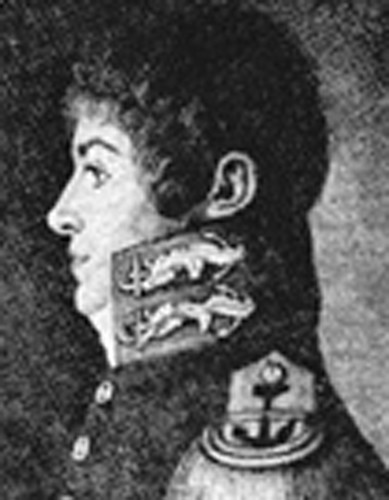18th Century French explorer
Louis Claude de Freycinet (1779 – 1841) was born in France, and at the age of 14, he joined the French navy. His early stint with the navy occurred during the tumultuous years of the French Revolution. He was an ardent supporter of Napoleon Bonaparte and shared Napoleon’s interests in science, exploration, and cartography.
By 1800, at 21 and already a battle-hardened naval veteran who had fought against the British, he embarked on a five-year voyage of discovery to the southwest coast of Australia. To the existing maps of the time, Freycinet added descriptions of several geographic features that bear his name today: Freycinet Peninsula and Freycinet National Park.
After Freycinet returned to Paris in 1805, the Napoleonic government supported his cartography skills as he mapped the expedition and wrote the narrative. His meticulous multi-volume work, Voyage de Découvertes aux Terres Australes, took nine years to prepare (1807-1816), and set the tone for the explorer’s more important publishing ventures a generation later.
With the dawn of the Congress of Vienna in 1815 that ended the European Napoleonic Wars, a century of relative peace ensued — only to be shattered by the First World War in 1914. Historians note that a re-awakening in the sciences and of scientific expeditions allowed the Europeans to carve new formal empires in Africa, Asia, and to an extent, the Pacific. To the Pacific came the Russians and the French.
Detailed scientific and historical Guam data
In 1817, Freycinet led an around-the-world expedition aboard the 350-ton corvette, L’Uranie. He was accompanied by his wife, Rose Pinon de Freycinet (who had disguised herself as a young man and came aboard the ship as a stowaway). In the vast Pacific, he visited Australia, the Mariana Islands, and the Sandwich Islands (Hawai’i) before returning to the Atlantic, where he lost the L’Uranie at the Falkland Islands.
On 17 March 1819, the L’Uranie anchored off Humåtak Bay and stayed for three months until early July. The primary purpose of his stay at Guam was to gather scientific and ethnographic data, but the sage commander also recognized that Guam could serve as a much needed stop over for his men who were suffering from malaria and dysentery.
Because of the long duration of the visit, and owing to the usual French intellectual curiosity, members of the Freycinet expedition compiled one of the most thorough scientific and historical descriptions of Guam of any visitors in the 18th and 19th centuries. Some of this information was based on the histories of Jesuits Francisco Garcia and Charles Le Gobien, but it was greatly amplified by data from interviews with CHamorus and Spaniards on Guam, particularly Luis de Torres.
At the time of Freycinet’s visit, Guam was a backwater of Spanish imperialism. The Manila Galleon trade had ended a decade earlier due to the Mexican Revolution, and the annual funds from the Viceroyalty of New Spain (known as situado) had been substantially reduced. Freycinet wrote critically about the economic depression and resultant poverty. The conservative Catholic explorer also wrote disapprovingly about the lax Augustinian morals —priests routinely fathered children — and the promiscuous attitudes of men and women. He described contemporary details of social life and customs, such as clothing, folklore (the popular “Two Lovers'” folk tale), cultural rites, and the many feral dogs that roamed throughout Guam.
He also published the first hydrographic survey of all 15 islands within the Marianas archipelago, published in 1826. It contained a folio atlas compiled by Lieutenant Louis Isadore Duperrey, who was second in command of the Freycinet expedition.
The results of this voyage were published under Freycinet’s supervision and titled, Voyage Autour du Monde exécuté sur les Corvettes de S.M.l’Uranie et la Physicienne, pendant les années, 1817-1820. Freycinet was admitted into the French Academy of Sciences in 1825 and was one of the founders of the Paris Geographical Society.
For further reading
Freycinet, Louis Claude Desaulses de. An Account of the Corvette L’Uraine’s Sojourn at the Mariana Islands, 1819. Translated by Glynn Barratt. Saipan: Commonwealth of the Northern Mariana Islands Division of Historic Preservation, 2003.
Marche, Antoine-Alfred. The Mariana Islands. Translated by Sylvia E. Cheng. Mangilao: Micronesian Area Research Center, University of Guam, 1982.
Sanz, Manuel. Description of the Mariana Islands, 1827. Translated by Marjorie G. Driver. MARC Educational Series no. 10. Mangilao: Micronesian Area Research Center, University of Guam, 1991.



